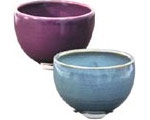Topic: Aromatherapy
Aromatherapy 101
Written by Dustin Cannon
Aromatherapy is an increasingly accepted form of healing the
body and mind through pure essential oils. Scoffed on as
recently as a decade ago, aromatherapy is now used in many
parts of the globe. The essential oils used in aromatherapy are
products of volatile plant essences and their derivative
aromatic molecules. The most common method that aromatherapy
uses to capture these essential oils is steam distillation.
Essential oils, in contrast to the more common cooking oils
such as vegetable oil, are very concentrated. If someone were
to apply an essential oil to their skin she or he would have to
first dilute it.
Aromatherapy uses these pure essential oils to affect the
body’s parasympathetic nervous system through its limbic
system. Another positive side effect of this aromatherapy
essential oil procedure is to fight bacteria.
Because essential oil distillation using steam, other methods
are hydrodistillation, cold press, carbon dioxide conversion
and through the use of phytols or florasols.  Hydrodistillation, similar to steam distillation of essential
Hydrodistillation, similar to steam distillation of essential
oils, simply uses water instead of steam for its aromatherapy
production. The steam, once distilled, is chilled in a
dispenser especially made for this aromatherapy process.
Essential oils rise to the top of the mixture during this
distillation process. The first form of aromatherapy essential
oil processing, hydrodistillation requires a watchful eye all
through its production. The still must not run dry and the
contents must not overheat. The result of either mistake would
be useless essential oils.
In the third aromatherapy production method carbon dioxide gets
converted to liquid from its initial gaseous state. This is
accomplished by subjecting it to high pressure. The resulting
liquid solvent is inert and very safe. Aroma molecules of
essential oils are extracted when the carbon dioxide is
liquefied. The most advantageous form of aromatherapy
processing, the carbon dioxide method uses all the solvent,
leaving no residue behind. The remaining carbon dioxide simply
evaporates once it is returned to normal pressure and
temperatures. Rose Hip, Calendula and several other aromatics
can only be created through the aromatherapy carbon dioxide
method. These are among the strongest and richest of aromas
developed for aromatherapy.
The aromatherapy cold press method produces essential oils that
are more vibrant that those given off during steam distillation.
Orange oil spray is one of the well known byproducts of cold
press aromatherapy production. Orange oil is released by
scoring or zesting the skin of the fruit.
The latest essential oil processing method is the use of a
benign gas solvent in phytols and florasols. In 1986 Dr. Peter
Wilde found that these plant materials gave off solvents that
could extract aromatic essential oils. The method he founded
was the lowering of the temperatures of florasols. The result
was a clear and free flowing oil that was free of any wax.
About The Author: Dustin is owner of http://JustArticlesVIP.com
and writes on a variety of subjects. To learn more about this
topic Dustin recommends you visit:
http://www.worldwideshoppingmall.co.uk/

